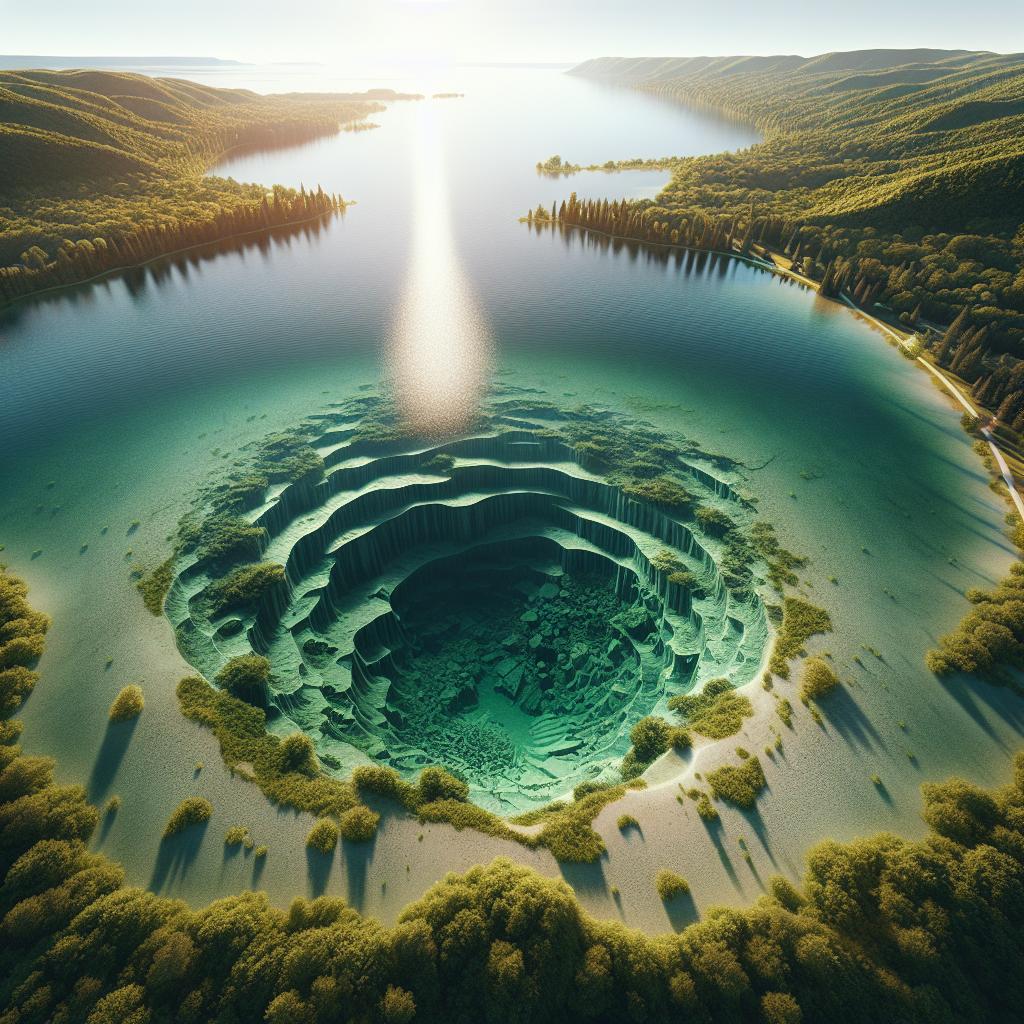

Lake Michigan Craters
Want to target the right audience? Sponsor our site and choose your specific industry to connect with a relevant audience.
Prominent brand mentions across targeted, industry-focused articles
High-visibility placements that speak directly to an engaged local audience
Guaranteed coverage that maximizes exposure and reinforces your brand presence
Interested in seeing what sponsored content looks like on our platform?
May’s Roofing & Contracting
Forwal Construction
NSC Clips
Real Internet Sales
Suited
Florida4Golf
Click the button below to sponsor our articles:
Sponsor Our ArticlesResearchers have confirmed the existence of 40 enormous craters at the bottom of Lake Michigan. These peculiar features were initially spotted via sonar imaging in 2022, leaving experts puzzled due to their strange likeness to circles. After further investigation, it seems the circles are vast holes. However, the process behind their formation remains a mystery.
Back in 2022, scientists embarked on a project to map the bed of Lake Michigan, specifically inside the Wisconsin Shipwreck Coast National Marine Sanctuary. This sanctuary is a protected segment of Lake Michigan known to contain 36 shipwrecks with the likelihood of harboring many more. During the mapping project, bizarre circles appeared on the map. According to Russ Green, a maritime archaeologist involved in the project, these circles seemed to be natural as opposed to man-made, suggesting depressions in the lake bed.
Local shipwreck hunter Brendon Baillod was among those who first spotted these mysterious circles, identifying them as depressions or craters between 20 to 40 feet deep. “There were dozens of them in our search grid,” he commented. Most were observed to be between 500 to 1,000 feet in diameter, with irregular shapes.
After some time, the researchers from the original mapping expedition together with the team at the National Oceanic and Atmospheric Administration’s (NOAA) Great Lakes Environmental Research Laboratory (GLERL) were able to conduct a collaborative survey to investigate these circles further. Using a remotely-operated vehicle, they finally confirmed the discoveries as huge naturally-formed craters and counted approximately 40 of them, believing there may still be more left undiscovered.
The craters, described as ‘perfect, little circles’ on the lakebed by researcher Steve Ruberg, extend from southeast of Sheboygan, Wisconsin, southwards in a line toward Port Washington. Similar depressions previously found at the bottom of Lake Huron turned out to be sinkholes, caused by groundwater dissolving the bedrock from below leading to a collapse of the surface layer. As part of Lake Michigan is situated over limestone, which is prone to dissolution, it is presumed that these craters are also sinkholes.
While some are already labeling these peculiar circles as sinkholes, others, like Baillod, are more cautious. He believes that they could better be named as craters; formed due to sediment disruption from beneath or trapped hydrocarbon off-gassing. Images from the recent survey showed the presence of freshwater shrimp, small fish, and invasive quagga mussels living inside these craters.
As to the impact that these holes might be having on Lake Michigan’s ecosystem, that is still unclear. However, the team is positive that they will find the answers in time. As Green noted, “We’ll be exploring them for years to come to learn more, and sort out how they got there and what role they play in Lake Michigan’s ecosystem.”
News Summary The Lima Municipal Court will be closed to the public on May 2,…
News Summary Many residents in Pennsylvania are still recovering from the devastating impacts of Tropical…
News Summary Community Action of Orleans & Genesee has officially launched a new office for…
News Summary Iredell County is set to launch its eCourts Digital Case Management System on…
News Summary Michigan authorities conducted raids at five homes linked to an investigation into pro-Palestinian…
News Summary Authorities executed search warrants in southeastern Michigan as part of an investigation into…